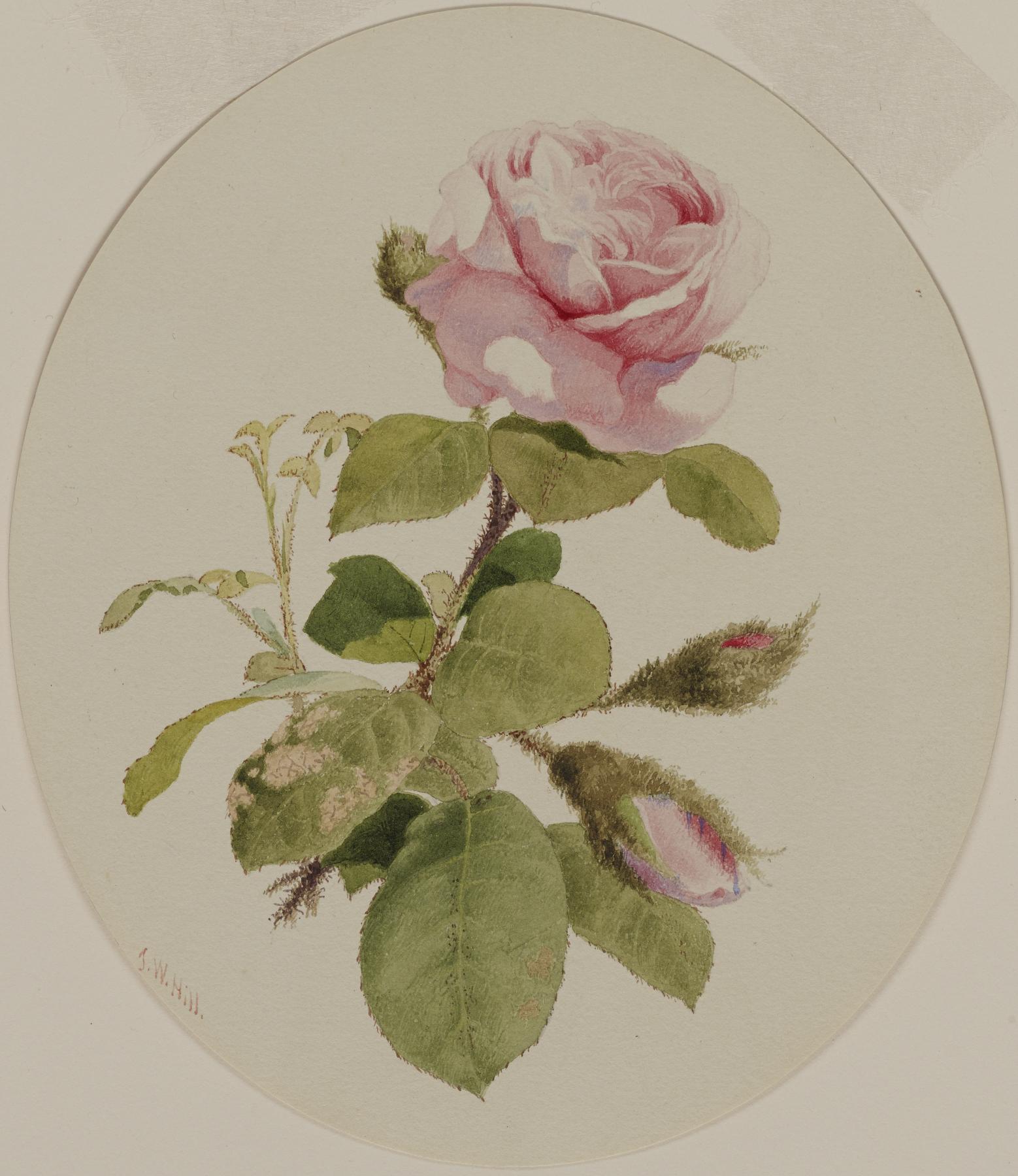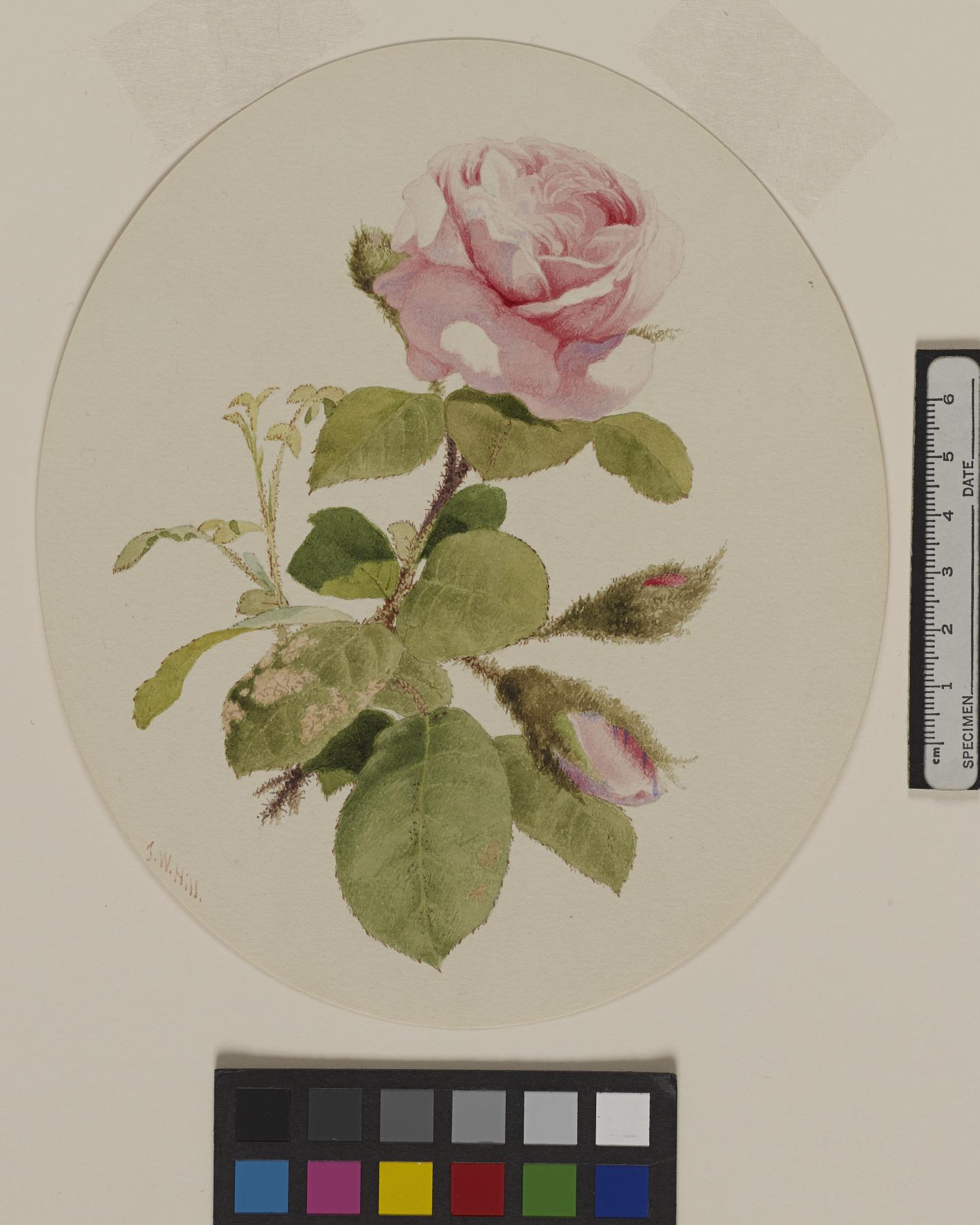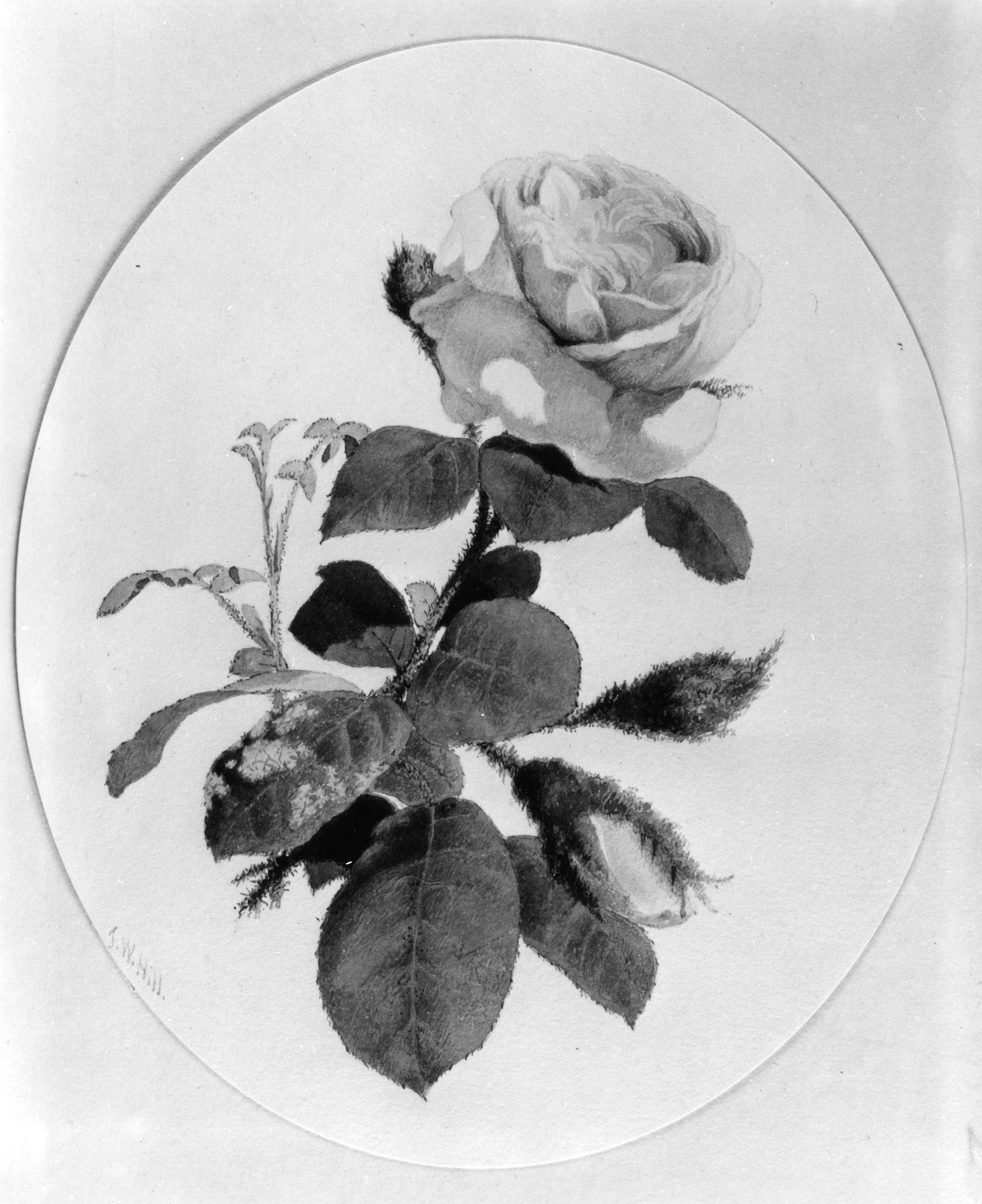A Rose
(18th and 19th Centuries )
John William Hill was born in London in 1812, the son of engraver John Hill. His family followed his father to Philadelphia in 1819 and then moved four years later to New York, where he was apprenticed to his father for the next seven years. Hill served as a topographical artist for the New York State Geological Survey from 1836 to 1841 and provided illustrations for natural history publications from 1842 on. In 1855, on one a trip to prepare a series of views of major North American cities he read John Ruskin's "Modern Painters." Ruskin's ideas significantly changed Hill's direction.
Given the lack of a concrete date for this work, it is unclear whether it dates from the period after he read "Modern Painters" or is related to his botanical work.
Inscription
Provenance
Provenance (from the French provenir, 'to come from/forth') is the chronology of the ownership, custody, or location of a historical object. Learn more about provenance at the Walters.
Acquired by William T. Walters, Baltimore; inherited by Henry Walters, Baltimore, 1894; by bequest to Walters Art Museum, 1931.
Exhibitions
| 1998-1999 | A Discerning Eye: Nineteenth-century Drawings and Watercolors. Academy Art Museum, Easton. |
| 1998-1999 | Botanical Delights: Floral Motifs in 19th-Century Art. Government House, Annapolis; Strathmore Hall Art Center, North Bethesda; Academy Art Museum, Easton. |
| 1992-1993 | Italian Vistas: Selections from the Permanent Collection. The Walters Art Gallery, Baltimore. |
Geographies
USA (Place of Origin)
Measurements
H: 6 7/8 x W: 6 in. (17.4 x 15.3 cm)
Credit Line
Acquired by William T. Walters
Location in Museum
Not on view
Accession Number
In libraries, galleries, museums, and archives, an accession number is a unique identifier assigned to each object in the collection.
In libraries, galleries, museums, and archives, an accession number is a unique identifier assigned to each object in the collection.
37.1545






